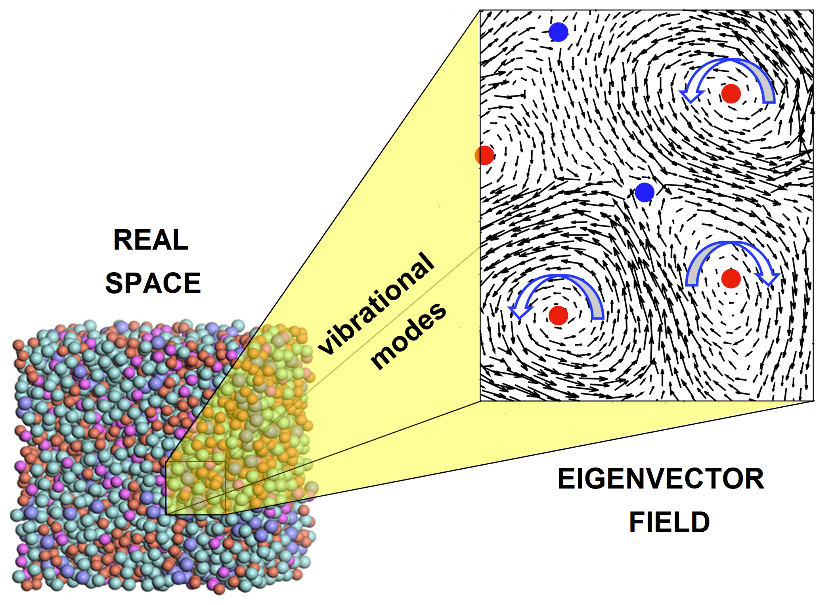

Figure 1. A cartoon of the idea behind the identification of topological defects in the vibrational modes of glasses.
Professor Matteo Baggioli (STJU and WQC) summarizes the recent breakthroughs in the search of topological defects in amorphous materials in a News and Views commentary for Nature Communications.
https://www.nature.com/articles/s41467-023-38549-8
In a crystalline solid, atoms are not randomly arranged. On the contrary, they sit in preferred positions, forming a periodic and ordered structure as depicted by the white sheeps in Fig.2a. Whenever such an organized configuration exists, it is almost immediate to find out a particle which does not follow the rules and breaks the order. In physics, we call such a rebel, like the blue sheep in Fig.2a, a defect.
Nevertheless, many solids in Nature are amorphous, and they do not respect the ordered and periodic atomic arrangement described above. Glasses are the most famous example of that sort. The structure of a glass is disordered and more akin to the colorful and heterogeneous herd of sheeps shown in Fig.2b. As a consequence, identifying a defect therein appears as an almost impossible task, if not an ill-defined concept altogether.

Figure 2. Finding defects in disorder systems is a difficult task.
Topological defects are well-defined mathematical objects that appear in many disparate areas of physics from cosmic strings in the universe, to vortices in superfluids and even in the patterns of human fingerprints. They represent a beautiful bridge between physics and a branch of mathematics known as topology. A practical application of this theory leads mathematicians, and quirky potters (see Fig.3a) to conclude that a coffee mug and a doughnut are equivalent, since they both have a single hole. Beside all the jargon, the main point is that certain degree of order is needed to define disorder.
The search for topological defects in amorphous solids has a long and controversial history. Professor Baggioli and his collaborators [Phys. Rev. Lett. 127, 015501, 2021] proposed to hunt for defects in the dynamical displacement field rather than in the static structure, and look for singularities upon deforming the system. The results indicated that standard topological concepts applied to the dynamical displacement field allow for a precise identification of defects, which well correlate with the major plastic events and successfully predict the location of the global yielding instability.
More recently, a Nature Communications paper by Wu et Al. [Nat Comms. 14, 2955 (2023)] came out and provided a potential breakthrough in this story. Wu and colleagues discovered that the long sought structural defects in glasses were hiding in the topology of the vibrational eigenmodes. Wu and colleagues noticed that the spatial distribution of the eigenvectors display a collection of whirls and curls and eye-visible vortex structures (see Fig.3b) with manifest singular behavior. By surrounding these defects with closed loops, and measuring the angular decifit of the vectorial field around them, they were able to obtain the corresponding topological charges and identify positive and negative defects. Positive ones are just perfect vortices, like those in the swirling water of your bathtub. Negative ones correspond to frustrated interfaces with a saddle shape. Using advanced statistical methods, Wu and colleagues were able to show a solid correlation between the density of negative defects and the location of the plastic events (see Fig.3c).

Figure 3. The revealed link between topology and plasticity.
To make it short, Wu and colleagues, following the original idea of Prof.Baggioli and collaborators, managed for the first time to identify topological defects in the static structure of glasses and to provide a direct link between the properties of glasses before deformation and the plastic behavior during it. The topological defects discovered by Wu and colleagues could play a pivotal role in our understanding of glasses, from the boson peak feud, to the nature of the glass transition as a topological phase transition, up to the fundamental origin of yielding. We just need to sit with a coffee mug and a doughnut and wait to see how topology will help us to make order out of disorder.




